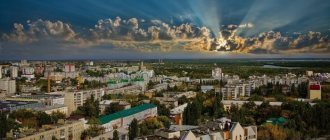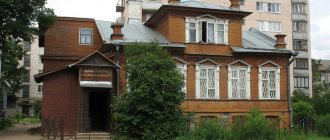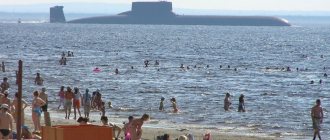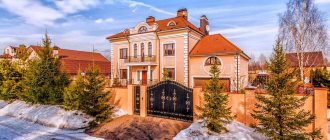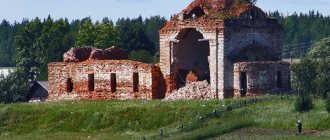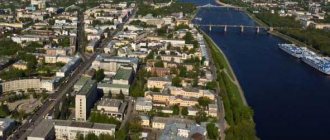The metropolis of a million people, which grew from a small fortress, founded in 1589, is the most important industrial, logistics, scientific and cultural center of the Russian South, has a glorious history. During the Pugachev rebellion, under the walls of what was then Tsaritsyn, the impostor’s army suffered a crushing defeat, which predetermined the final defeat. Already under the name Stalingrad, the city, which turned into a fortress, stood like an insurmountable wall on the path of the fascist Wehrmacht, which broke its backbone here. The sights of Volgograd, photos and descriptions of which you will find below, will tell tourists about the main milestones of its history from the Middle Ages to the present day.
General information and history of Volgograd
The symbol of Volgograd is Mamaev Kurgan.
Volgograd is one of the largest cities in Russia. Today it is the center of the Volgograd region and has a population of just over a million people. It was located on the right bank of the Volga. The uniqueness of this city lies in its length. The official point of view is that it stretches for 85-90 km along the river, but if you take into account the nearest suburbs, then its length is more than 120 km. This location makes Volgograd very special, since it takes almost 4 hours to cross the city.
Volgograd was founded many centuries ago. The first mention in written sources dates back to 1589. This year is considered to be the founding of the city. It was then that the name was given - Tsaritsyn. The settlement was located at the intersection of the Tsarina and Itil rivers (today the Volga). Many trade routes passed through it, which became the reason for prosperity. The city developed and grew, the first steamships and piers gradually appeared, and a railway was built. The population increased significantly.
In the 20th century, the city was to play one of the significant roles in the history of Russia. It was here, on the territory of modern Volgograd, that the retreat of German troops in the Great Patriotic War began.
On April 10, 1925, the city was renamed Stalingrad. It was under this name that he went down in history. The Battle of Stalingrad became one of the decisive ones in the Second World War. It began on July 17, 1942. During this battle, more than 40 thousand civilians died, since the population was not evacuated. The battle lasted until February 2, 1943. And it is precisely this that is considered the turning point during the war. The battles of this time can be called some of the most intense battles. The building of the city's main telegraph changed hands 13 times. 102 height, a hill called Mamayev Kurgan, was captured by the Nazis 8 times, but was always recaptured as a result. Thousands of people died in these 100 days, but thanks to them they managed to defeat the enemy.
The hero city was destroyed. There are almost no surviving buildings left. Due to such an intense attack and severe damage, it had to be rebuilt. The central part of the city was completely built, and its territory increased significantly. It is impossible to recognize the former Tsaritsyn in modern buildings.
On November 10, 1961, the city changed its name again. From now on he is Volgograd. But even today there are discussions that it went down in history like Stalingrad. And there are many supporters who want to bring the name back. In 1965, Volgograd was awarded the status of a Hero City for its unique role in the Patriotic War and Russian history in general.
Volgograd is located near the Volzhskaya hydroelectric power station. This is one of the largest power plants in Russia. Its construction took many years. And today it supplies electricity to a vast territory, including Moscow and the Moscow region. Long-term construction has significantly affected the ecological state of the area. The Volga-Don Canal also begins in Volgograd.
Volga-Don Canal named after. Lenin
Pavlov's House
The residential building on Lenin Square, whose defense was heroically held by a group of Soviet soldiers for almost two months, did not stand out in any way before the war.
It owes its modern name to Sergeant Ya. F. Pavlov, who led the assault on the building and later led its defense together with Lieutenant I. F. Afanasyev.
Pavlov's house is considered the first restored building in Stalingrad - most of the house was put in order during the summer of 1943.
Today house number 39 on the street. Sovetskaya, known as Pavlov's House and the House of Soldiers' Glory, remains a residential building. Its end walls have been turned into memorials telling about the feat of the Red Army soldiers.
Climate and ecology of Volgograd
Volgograd is located in the southeast of European Russia. The region is characterized by strong temperature changes. In summer it is very hot, the thermometer rises by more than 40 degrees. But there are also harsh winters. Summer is without heavy rainfall, very warm and with constant wind. Winter with pronounced changes. Over the course of 2-3 cold months, constant thaws and cold snaps are observed, which leads to glaciation of surfaces. February is considered to be the harshest month. The hottest month is July. During the summer period, almost all vegetation manages to burn out due to high temperatures. It is also impossible to hide in the shade in the city, since the hot breeze accompanies you in every corner.
The city's territory contains mostly artificially grown tree plantings. Without special watering and care, vegetation almost does not survive. The steppe zone is distinguished by an abundance of shrubs and herbs, but not spreading trees.
The ecological situation of Volgograd is very specific. There are many light and heavy industry enterprises in the city. Every day they emit substances into the atmosphere that threaten human health.
Transport is also considered the main factor of pollution. In recent years, the number of personal cars has increased significantly, which cannot but affect the state of the atmosphere.
The ecology in the region had a special impact throughout the 20th century, as humans interfered with natural processes. The construction of a hydroelectric power station led to the flooding of a vast coastal area. A similar thing happened during the construction of the Volga-Don Canal. In the Green Patrol rating for December 2011, which reflects the state of the environment, the Volgograd region ranks 29th out of 83. This means that the situation in the region is much better than in the Astrakhan, Voronezh and other regions. The higher on this list, the more favorable the state of the atmosphere we can talk about.
Population of Volgograd
According to data as of January 1, 2014, 1 million 18 thousand people live in the city. To maintain the status of a “million-plus population,” the borders were expanded, and in March 2010, the territories of the urban district were annexed to Volgograd. Today Volgograd ranks 13th in terms of population in the Russian Federation.
Volgograd is multinational. Different peoples live on its territory. More than 120 representatives of various cultures and nationalities settled in this territory. Many of them have existed here since ancient times. But the majority of the population is Russian (90% as of October 2010). The second largest population is occupied by Kazakhs, followed by Ukrainians and Armenians.
Proportionally, there are more women in the city (55%). And more and more residents are of working age (22.9%). But it is precisely these figures that speak of stability and prolongation of life of the population. At the same time, the number of births per 1000 people is 9.9, and the number of deaths is 13.1.
The population is distributed unevenly in Volgograd. The new areas accommodate many more people than the previously built ones. The population of Dzerzhinsky, the youngest region of the city, is more than 180 thousand, and Krasnoarmeysky is more than 167 thousand. In total, Volgograd consists of 7 districts and several small islands on the Volga. In addition, there are a lot of private houses in areas remote from the center. And due to the nature of the terrain, small hills on the territory, some areas are not inhabited. And it seems that the city is being “torn apart” by areas where there are no buildings.
Private sector of the city of Volgograd
Fountain "Barmaley"
The Tsaritsyn fountain, installed in 1930 in front of the city defense museum, had many names. Most often mentioned are “Dancing Children”, “Children’s Round Dance” and “Barmaley” - in memory of the poetic fairy tale of the same name by K. Chukovsky.
The fountain went down in history as a symbol of the terrifying contrast between carefree childhood and war. Destroyed by bombing in 1942, it became a silent reproach to human cruelty.
The composition, restored by 1945, was dismantled six years later due to the redevelopment of the city. However, two modern replicas of the fountain were made in 2012–2013. A copy of the destroyed “Barmaley” was installed at the Gerhardt mill, and the fountain in its original form returned to Station Square.
It is noteworthy that the image of the “Dancing Children” became known far beyond Russia. In particular, it was used in the dystopias A Clockwork Orange and V for Vendetta.
Districts and real estate of Volgograd
The central district of Volgograd has existed since the 16th century. It was significantly modified and rebuilt, but it can be called the main one. It was on this territory that the construction and development of the city began. Surprisingly, most of the battles during the Battle of Stalingrad took place on its territory.
Today the area has been completely restored, although it is completely different from the Central part of Tsaritsyn. The architects spent a lot of time and effort to rebuild this part. In the late 40s - early 50s, active construction was carried out here. At the moment, this area is almost undeveloped.
Volgograd center
Krasnooktyabrsky district is connected with a metallurgical plant. Its laying took place in 1897. At this time, there were 2 villages located here: Big Little France and Russian Village. Most of the population worked for. This territory was included in the city only in 1908, and its territory was changed several times. The name was also not permanent. At one time he was Rykovsky, then Dzerzhinsky. Only in 1936 was it given a name that has remained to this day. Today it is the third largest region, with more than 153 thousand people living here.
Voroshilovsky district borders with Central. Sawmills were located on its territory in the 19th century. The decision to annex it to the city was made in the 20s. Initially it had the name Mininsky. And its territory included modern Voroshilovsky and Sovetsky districts. But gradually the territory of the Sovetsky district increased, and it was made separate. This territory is the most sparsely populated. But this is where many of the infrastructure elements are located.
Traktorozavodsky district owes its formation to the tractor plant. Until the 20s of the 20th century it was a deserted area. But in 1926 the first stone was laid in the construction of a large machine-building enterprise. Construction proceeded at a rapid pace, and a residential village was formed next to the plant. Only in 1936 did this territory become a separate district. Before that, she was part of Dzerzhinsky. During the Great Patriotic War, this territory was completely destroyed. All that remains of the factory are ruins. But by the 70s everything was completely rebuilt. Today, just over 140 thousand people live on Traktorny.
The Sovetsky district was part of Voroshilovsky for many years. Initially, the village of Novo-Nikolskoye was located here. In the 20s, this territory was annexed to the city. There was no separation of the two territories until 1975. It was during this time that the areas became segregated due to great expansion.
Kirovsky district was annexed to the city in 1931. Before this, the village of Staraya Beketovka was located here. Sawmills established a fairly large settlement here. Further villages were annexed to it - Staraya Otrada, Salty Pond, Barachny and others. The area received its name in 1936. Kirovsky is 15 km away from the center of Volgograd. It is connected to the city by a major highway - the Second Longitudinal. Today it can be called “sleeping”. And more than 104 thousand people live here.
Krasnoarmeysky district is the farthest from Central. But its history goes back several centuries. In 1765, this territory was granted to foreigners - the Germans. And then a settlement was formed - Sarepta. A fortress was built to protect against nomads, a church and various buildings for economic and work needs were erected. But only in March 1944 was it decided to annex this territory to Stalingrad. The length of the region along the Volga is more than 30 km. This is the second most populous district of the city.
Spartanovka is one of the young districts. Officially, it is not a separate territorial unit, but most residents separate this territory from the Traktorozavodsky district. In the 50s of the 20th century, construction of the Volzhskaya Hydroelectric Power Station began. And the entire population had to be evicted. The village was demolished. But in the 60s, the construction of a new district began. In just 40 years, a huge number of modern buildings have been erected here.
Dzerzhinsky district is the youngest in Volgograd. Its construction began only in 1971. And instead of vegetable gardens and an airport, a modern part of the city with developed infrastructure arose. More than 180 thousand people live here. And construction on this territory is an opportunity not only to expand the city along the Volga, but also to expand its borders in breadth.
Volgograd today is a fairly modern city. On its territory there are practically no buildings erected earlier than the 40s of the 20th century. This is due, to a greater extent, to the destruction of the city in the Great Patriotic War. Most of the buildings are modern and suitable for living. And today the city continues to grow. New areas - Dzerzhinsky, Spartanovka, Traktorny are being built up with incredible speed. There are a million people in the city who need all new housing. And therefore there is an increase in the housing stock and expansion of infrastructure.
Volgogradsky railway station
When choosing a place to live in Volgograd, it is worth thinking about what exactly is a person’s priority. Someone will choose a quiet life without unnecessary noise and traffic congestion, but far from the center. Someone, on the contrary, will strive to live in areas where the largest number of enterprises are concentrated, have convenient access to work and have connections to anywhere in the city.
central District
The central district is the most expensive area of the city. This is where the “heart” of Volgograd is concentrated. Central embankment, train station, Mamayev Kurgan, Panorama Museum of the Battle of Stalingrad, various exhibitions, cinemas, shopping centers. And although the area is not considered the most densely populated, it is here that the largest concentration of people occurs. City residents and guests of Volgograd come here every day. Hundreds of thousands of people walk along the central streets. Through this territory there is a connection between all corners of the city. This is where tourists from all over the world flock.
A huge number of offices, enterprises and various establishments are located in the center. There are places to walk and places to go. The center is not only convenient, but also beautiful. When constructing buildings, aesthetic perception was taken into account. There are not only buildings here, but also convenient squares and parks. You can sit in the shade of the trees or go down to the Volga itself.
When constructing the area, the status and importance of the city was taken into account. Therefore, this part is built up with low (mainly up to 5-6 floors) buildings of the Stalinist type. During construction, the needs of citizens were taken into account. The apartments here have a large layout with high ceilings.
There is no cheap housing in the Central region. These are either modern buildings, which means they are as comfortable as possible, or they are old (relatively), but created according to excellent designs. The cost per square meter in this area is more than 70 thousand rubles.
New buildings in Voroshilovsky district
Dzerzhinsky district
Dzerzhinsky district is the most densely populated. What is its advantage? It is not far from the center. Its basis is multi-story buildings of the same type. According to the construction program in the 70s, it was necessary to build as much housing as possible in a short time. And it was done. Hundreds of high-rise buildings are located in a small area. All the facilities necessary for life are concentrated here: shopping centers, shops, cinemas, parks and squares. And in just 15 minutes you can reach the center of Volgograd.
The Dzerzhinsky district is distinguished by good roads and convenient communications with other areas. The only significant drawback is the queues for public transport during peak hours. But there are no major traffic jams in the area itself, since the transport system is properly created. Congestion occurs on the territory of the Second Longitudinal, at the connection of the central and Dzerzhinsky districts. Accommodation here is very convenient, since it is impossible to call this area industrial. There are small businesses here, but they are not as significant as in other areas. There are no large parks or squares here yet. For such a short time of existence, the trees have not yet had time to grow. But this is only temporary. When planning, places for recreation and leisure of citizens were taken into account.
If we talk about apartment prices, the figure differs only in the central part of the city. In all other areas the average cost is the same - about 40 thousand per square meter. An increase is only possible in new buildings and houses with an improved layout.
Dzerzhinsky district
Krasnoarmeysky district
The Krasnoarmeysky district of Volgograd is often called a separate city. Many residents have never been to the Center, much less Traktorny or Spartanovka. Often this is not necessary, since here there is everything necessary for life. It has its own embankment, its own cultural centers, for example Sarepta, developed industry and separate infrastructure. The area stretches for 30 km along the Volga. This is where the Volga-Don Canal begins. Lenin.
The area is relatively new. But a lot of money is spent on its development. The transport system is developed here and conditions for a favorable life have been created. It even has its own train station and port. But before you buy an apartment, you need to decide on a job. Getting to other areas is not difficult, but it takes a very long time. The journey to the center can take more than an hour, which is quite inconvenient. Mostly residents prefer to work right there, since there are many similar opportunities. Most companies operating in Volgograd open offices in areas close to the center and separately in Krasnoarmeysky, since residents, in the majority, will not leave here unless absolutely necessary.
For quite a long time, this territory belonged to the Astrakhan region or Kalmykia. Only recently, in the 20th century, it became part of Volgograd. But this is the most isolated and remote territory. The cost of apartments here varies. It all depends on the year of construction and layout. There are “Stalin” buildings, “Khrushchev buildings”, modern buildings and the private sector. In this area, everyone can find housing to suit their taste.
Krasnoarmeysky district of Volgograd
Krasnooktyabrsky and Traktorozavodsky districts
Krasnooktyabrsky and Traktorozavodsky districts are the most industrial. Most of the city's enterprises are located here. But there are advantages to this - the proximity of the location to the place of work. The downside is the environmental situation. Businesses are not located among residential buildings, which is very convenient. A large number of standard five-story buildings make housing inexpensive. Here it is important to buy an apartment not far from the central streets of the city - First or Second Longitudinal. This will help a lot in moving.
The development of the Krasnooktyabrsky district today is happening gradually. Entire residential complexes with improved housing are being built. And many city residents buy these apartments even despite the proximity of factories. In addition, this area borders on Central, which is convenient in many ways. Schools, hospitals, kindergartens are fully represented in these areas.
Krasnooktyabrsky district
Microdistrict Spartanovka
Spartanovka is an area that was built up in just a few decades. All wooden houses were demolished, people were located in other areas. After the launch of the Volzhskaya hydroelectric power station, the construction of residential buildings began here. There are no large factories in this area. There are multi-storey buildings built according to modern designs. Spartanovka is still being built today.
Spartanovka belongs to the Traktorozavodsky district. This neighborhood cannot be called the most popular. There are less traffic jams here. Spartanovka is completely suitable for living. There are clinics, kindergartens and schools here. There are no large shopping centers in the area, but there are a large number of shops and restaurants.
The entire city has a well-developed transport system, but it is not possible to get directly by public bus or tram from Spartanovka to the other end of the city, for example the Krasnoarmeysky district. We'll have to do a transplant. In Volgograd there is no direct route to connect the extreme points of the city.
There are no large marinas, railways or heavy traffic on Spartanovka. The main street of the city, the First Longitudinal, begins here. A large volume of traffic passes through it, but due to the correct construction of interchanges, traffic jams rarely occur here.
There are two more settlements near Volgograd. This is a satellite city of Volzhsky and Krasnoslobodsk. They are located on the opposite bank of the Volga. Connected to the hero city by large bridges. It is convenient to get to Volzhsky via a hydroelectric power station. From the center, head towards Spartanovka. The distance from Volgograd to the satellite is less than 10 km. But Volzhsky has the status of one of the greenest cities in Russia. That is why many people prefer to live there.
Volzhsky has about 300 thousand inhabitants. This is a young city that was built along with the construction of a hydroelectric power station. Unlike Volgograd, it has a huge amount of greenery, beautiful squares, and neat houses. The cost per square meter in Volzhsky is about 35 thousand rubles. This is slightly lower than in the metropolis. This town is distinguished by the fact that industry is very developed here, large chemical enterprises are located here, which produce a huge amount of products. Accordingly, the population is fully provided with work. There are more shopping centers, sports complexes and various entertainment facilities in the city than in the whole of Volgograd.
The second closest settlement is Krasnoslobodsk. This is a settlement opposite the central part of Volgograd. And although it has the status of a city, it can rather be called a village. It mainly consists of the private sector and a small number of two- to three-story buildings. For a long time, this territory was not popular, since it was possible to get here only by a detour - through Volzhsky. But in 2010, a new bridge across the Volga was opened. Now you can get to the center of Volgograd in 15 minutes. And thanks to this, real estate has increased sharply in price.
Today you can buy land or a finished house in Krasnoslobodsk and get to Volgograd in a matter of minutes. Those. There is an opportunity to live in a private house, but very close to the center. In addition, this settlement is located on the Volga. On this side of it there are gorgeous beaches where you can relax wonderfully in warm weather.
Most residents prefer to spend their free time in Volgograd, since large cultural centers are located there. It’s also worth buying food or things there. There are small shops and a weekend market in Krasnoslobodsk, but not everything can be found in its open spaces. This area is very promising; the more residents move, the faster the infrastructure develops. The cost of a small one-story house with an area of up to 60 square meters will cost 3-5 million rubles.
Between Volzhsky and Krasnoslobodsk lies the Volga-Akhtuba floodplain. Akhtuba is the only river that flows from the Volga. This happens next to the Volzhskaya hydroelectric power station, just downstream. This river is medium in size, but its banks are a great place to live and relax. Today the floodplain is a protected area, but on its territory there are a large number of villages and tourist centers. We can say that they are all located in the nearby suburbs of Volgograd. And today these areas are becoming more densely populated every year.
Many cottage villages are being built, existing settlements are being rebuilt and improved. In this area you can grow various crops, erect buildings, and at the same time be in the metropolitan area, which is very convenient. It is better to get there through the new bridge over the Volga, i.e. through Krasnoslobodsk. There are no traffic jams on this road. And today it is not too busy. The price per hundred square meters in this area is very different - from 15 to 70 thousand rubles. The price limits for houses are also varied. The better the communication system, the more expensive it is. But it often happens that the house is excellent, but there is not even an access road.
You don’t have to live in the floodplain, but just relax. There are many camp sites here that provide all the conditions for a stay - houses, barbecues, dishes, fishing equipment, etc. Thousands of people go to this territory on summer days. But in the last couple of years, government bans on campfires in this area have become increasingly common.
House of Public Utilities Workers
Built in 1937, the House of Communal Workers became an example of Soviet architecture of the early period. The building was located near Station Square, which largely determined its fate.
German bombs and shells destroyed the House of Public Utilities to the ground; by 1943, only a few isolated sections of the walls stood.
The ruins of the building remained untouched until the 60s, when they were demolished and the site cleared for future construction. However, a new house never appeared here.
Today, on the site of the former House of Public Utilities, there are only a few small retail outlets; a little further away there are five-story residential buildings.
City infrastructure
Volgograd is a city with a developed transport system. Due to its large extent, the government has to pay great attention to this area. The main transport today is the underground tram, trolleybuses, buses, minibuses and taxis.
Today, 2 main roads have been built, stretching almost the entire city. These are the First and Second longitudinal ones. They are located parallel to the Volga, and other streets connect them with each other. They can be called the central arteries of the city, along which the main flow of personal and public transport moves.
2nd longitudinal
The underground tram in Volgograd is like a metro. This structure is the only one in Russia. The tram connects Traktorny and Voroshilovsky districts. Most of its route the tram runs along the ground line, but in the Central region it runs underground.
Volgograd metrotram
There are electric trains that also connect areas of the city. From the central station in two directions - in the south and north they go according to schedule. This is one of the most convenient ways to travel, for example from the Center to the Krasnoarmeysky district. But the most popular transport in the city today is minibuses. They move in all directions and connect all corners of the city.
The length of Volgograd is about 90 km. And therefore there is no route that would connect the extreme points of the city. Those. from the Krasnoarmeysky district to Spartanovka you will have to travel with a transfer. But still the transport system is developed quite well. And from Volgograd it is very easy to get to both nearby areas and remote cities (by train, plane or bus).
Highway congestion in Volgograd increases every year. Today, traffic jams occur every day in the Central region. During construction, such a number of cars was not taken into account, so difficulties arise with movement. Traffic jams in the Tulak area are also frequent, but they are more related to two crossings, along which trains travel quite often, which means they are closed. There are now traffic jams in the Sovetsky district, sometimes the Second Longitudinal in Krasnooktyabrsky is stuck. Surprisingly, there are never traffic jams in Krasnoslobodsk and Volzhsky. Perhaps this is what causes the resettlement of residents.
Volgograd is a modern city, which means it is equipped with everything for the development of children and youth. The city has 240 municipal kindergartens, plus many private development centers, 102 secondary schools, about 30 lyceums and gymnasiums, 31 sports schools and about 30 art schools. Today there is a tendency to create private educational institutions, so it is difficult to give an exact figure. But in addition, there are a large number of places for leisure, clubs and sections for children and adults.
Volgograd has 5 large universities, 4 academies and many institutes and branches of institutes. Every year, up to 40 thousand people graduate from the above-mentioned institutions. They train specialists in various fields: from doctors and teachers to engineers working with laser technology.
Volgograd Agricultural Academy
Enterprises and work in Volgograd
Volgograd is a large city with developed industry. The largest contribution to development is made by heavy industries, namely: metallurgy, mechanical engineering, metalworking, chemical enterprises, and energy.
Electric and heat power enterprises: Volzhskaya HPP (the largest in the European part of Russia), Volgogradskaya CHPP-3 and CHPP-2, Volgogradskaya GRES.
Metallurgical enterprises: producing special-purpose steel; OJSC Volgograd Aluminum; LLC Volgograd Non-Ferrous Metals Plant. Metalworking and mechanical engineering: OJSC "Volgogradneftemash" - products for oil production; OJSC "Volgograd Drilling Equipment Plant"; OJSC "Volgograd Plant of Tractor Parts and Normals"; JSC "Volgograd Transport Engineering Plant"; OJSC "Volgograd Shipyard" and others.
Chemical plants and enterprises: OJSC "Kaustik" is one of the largest chemical companies. ; OJSC "Plastcard"; JSC Volgograd Oxygen Plant.
These enterprises account for 46% of total industrial production. They provide jobs for most of the population. But as a result of their work, significant environmental pollution occurs.
A large number of people are involved in the food and service industries. The city always requires specialists with technical education, since the above-mentioned enterprises require qualified personnel. Also in Volgograd there are many companies involved in the sale of manufactured products; therefore, people are required who are ready to work in the trade sector.
BC Volgograd City
The chains of large stores “Magnit”, “Pyaterochka”, “Lenta” invite employees to work almost constantly. The average salary in the city is 15-20 thousand rubles in the spring of 2012.
A small metallurgical enterprise that existed in Tsaritsyn since 1897, with the advent of Soviet power, turned into an industrial giant, supplying high-quality steel for the automotive, agricultural, and later military engineering industries.
In 1942, it was almost completely destroyed by German aviation and artillery, and the ruins of the workshops became the site of heroic hand-to-hand combat between Soviet soldiers and Wehrmacht troops - shooting here was made difficult by ricochets and low visibility.
After the Battle of Stalingrad, the plant was restored at an accelerated pace - just five months later it produced its first melt of steel.
After the war, Red October continued its work. Today it owns about a third of the stainless steel market in the Russian Federation.
Crime
This is what our reader Medved writes about crime in the city (for which we sincerely thank you!): as in every more or less large city in the Russian Federation, there are places where it is better not to walk without a weapon during the day. And in the dark they’ll even unscrew the head - let’s start in order:
Traktorozavodskoy district - the lower village of VGTZ, partly the village of Spartanovka - is a little more than completely full of cattle, drugs and other scum. It is strongly NOT recommended to move even one step away from the main street, and to the question “Boy... Will there be a cigarette??” respond with a blow of brass knuckles between the eyes. Without words. In war it’s like in war.
Krasnooktyabrsky district - the village of Metallurgov (not to be confused with the avenue) and the so-called Petite France - the former area of dormitories - the rest of the Monolith complex and the lower barricades - mainly alcohol, although there are other interesting personalities. More or less efficient and genetically non-alcoholic youth live in Moscow/St. Petersburg and other capitals.
The central region is the actual focus of the “hero”. generally calm, although... The central embankment is a real chance to get a feather in the side, especially from the “southern” brothers, whose inadequacy correlates with the long nose. And the village of Angarsky is basically a complete dope place. In slang - zombie.
Voroshilovsky district - Dar Gora, the entire private sector is full of gypsies and grass. It’s just a plank lover’s paradise, now the valiant police have somewhat reduced the assortment, but the author remembers the times when checks flew out of the windows of apartments on the first floors of houses opposite the dorm.
Kirovsky district - special attention to the village. Beketovka, reeds and huge dogs in them. homeless people. And if you run into a pack, the only way to survive is to run. They attack immediately in a pack and without warning. Of course, locals deliver with Chinese switchblades, but those who fight decently, as a rule, don’t interfere - they’re just rocking the boat.
Krasnoarmeysky district is a difficult place. The people are generally good, but there are places like Lower Sarepta and the village of Khimikov. Either the produced sarin had such an effect on the offspring, or acquired injuries - but colorful personalities often emerge.
There is also organized crime, but it is called business and rarely interferes with the affairs of mere mortals. He especially dislikes former military personnel/veterans of hot spots - the author guarantees.


